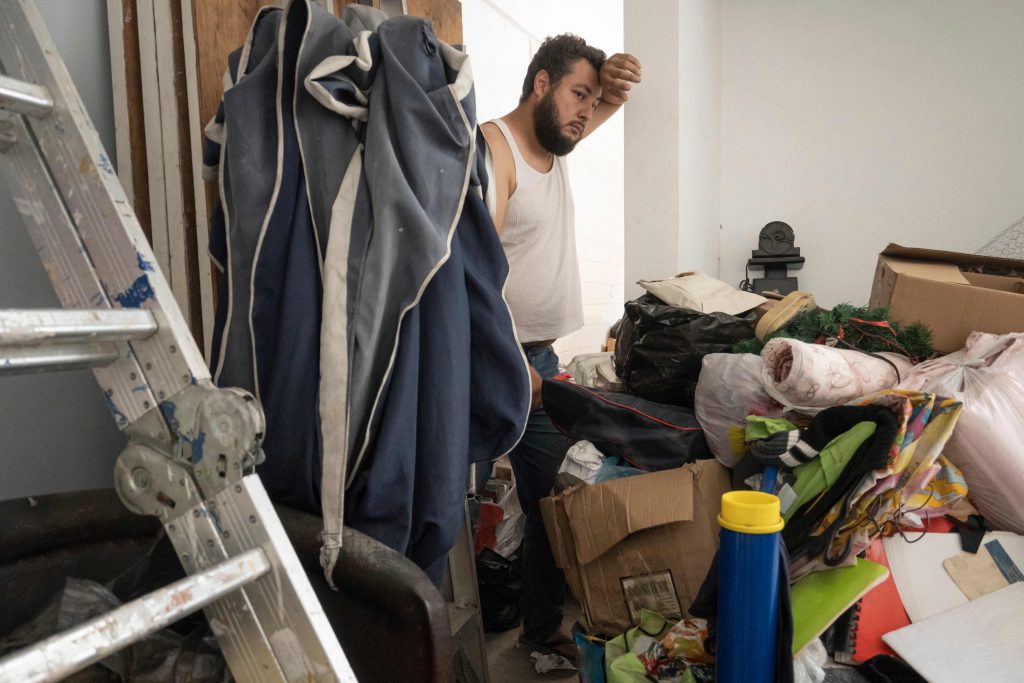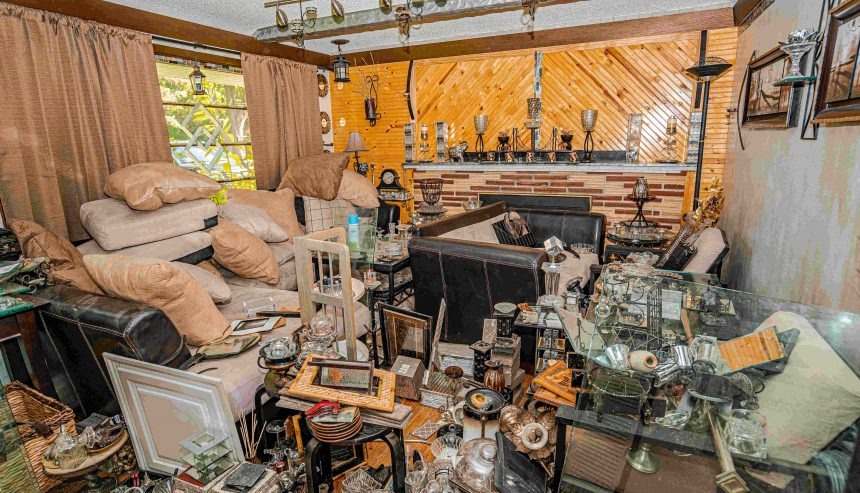Hoarding is a complex psychological disorder characterized by the excessive accumulation of items, often resulting in cluttered living spaces and significant distress for the individual affected. It’s more than just collecting; it’s a manifestation of underlying emotional and mental health issues.
This is not merely a clutter issue; it’s a complex disorder that poses significant dangers to individuals and their environments. From fire hazards to health risks, the consequences of hoarding can be severe and far-reaching. Hoarding dangers, causes, stages, and how PuroClean of Ft. Lauderdale South can help Hoarders will be discussed as we are set up to help hoarders across the Broward and Miami-Dade counties overcome the challenges associated with hoarding.
Hoarding Causes
This disorder is influenced by a combination of genetic, environmental, and psychological factors. While the exact causes may vary from person to person, several common underlying factors contribute to the development and maintenance of hoarding behaviors:
- Genetics: Research suggests that genetics play a significant role in predisposing individuals to hoarding disorder. Studies have found that hoarding tendencies can run in families, indicating a genetic component to the disorder.
- Neurobiology: Neuroimaging studies have identified differences in brain structure and function among individuals with this disorder. Specifically, abnormalities in regions of the brain involved in decision-making, emotional regulation, and attachment have been observed, contributing to difficulties in discarding possessions.
- Trauma and Adverse Life Events: Traumatic experiences, such as loss, abandonment, or displacement, can trigger or exacerbate these behaviors. Individuals may develop a strong emotional attachment to possessions as a way to cope with past trauma or feelings of insecurity.
- Environmental Factors: Environmental influences, such as upbringing, culture, and socioeconomic status, can shape attitudes and behaviors related to acquiring and discarding possessions. Growing up in environments where hoarding is normalized or encouraged may increase the likelihood of developing a hoarding disorder.
- Co-occurring Mental Health Conditions: This condition often coexists with other mental health conditions, such as depression, anxiety, obsessive-compulsive disorder (OCD), and attention-deficit/hyperactivity disorder (ADHD). These comorbidities can exacerbate hoarding symptoms and complicate treatment efforts.
Stages
Hoarding disorder typically progresses through several stages, each characterized by escalating levels of clutter and dysfunction. Understanding these stages can provide insight into the severity of the disorder and guide interventions:
- Acquisition: The initial stage of hoarding involves the excessive acquisition of items, driven by a perceived need, emotional attachment, or fear of scarcity. Hoarders may compulsively acquire free items, shop excessively, or rescue objects others deem worthless.
- Clutter: As the accumulation of possessions continues, living spaces become increasingly cluttered and disorganized. Those with this problem may struggle to navigate their homes, and basic activities such as cooking, cleaning, and sleeping become challenging.
- Isolation: This often leads to social isolation as individuals withdraw from friends, family, and community activities. Shame, embarrassment, and fear of judgment contribute to social withdrawal, exacerbating feelings of loneliness and despair.
- Functional Impairment: At this stage, hoarding significantly impairs daily functioning and poses serious health and safety risks. Clutter obstructs pathways, blocks exits, and harbors pests and mold, creating hazardous living conditions.
- Crisis: Without intervention, it can reach a crisis point where individuals face eviction, loss of custody, or other severe consequences. The accumulation of possessions may trigger fires, falls, or other emergencies, further jeopardizing safety.
Dangers
- Fire Hazards: According to the National Fire Protection Association, NFPA hoarding poses a substantial fire risk due to the accumulation of flammable materials and blocked exits. Cluttered homes make it difficult for occupants to escape in the event of a fire and hinder firefighters’ efforts to extinguish flames. Research indicates that individuals with hoarding disorder are at a significantly higher risk of fire-related injuries and fatalities compared to the general population.
- Health Risks: Hoarding environments often harbor mold, dust, bacteria, and pests, posing serious health risks to occupants according to the Mold | CDC. The accumulation of organic materials and food waste can attract insects and rodents, increasing the likelihood of infestations and disease transmission. Poor indoor air quality in hoarded homes can exacerbate respiratory conditions such as asthma and allergies, leading to chronic health problems over time.
- Structural Damage: The weight of accumulated clutter can strain the structural components of a building, leading to structural instability and collapse. Piles of belongings stored haphazardly may compromise the integrity of floors, walls, and ceilings, putting occupants at risk of injury. Structural damage caused by hoarding can result in costly repairs and render properties uninhabitable if left unaddressed.
- Sanitation Issues: Hoarding environments are often unsanitary and difficult to clean, exacerbating hygiene problems and increasing the risk of infectious diseases. According to the CDC Sanitation standards, the accumulation of human and animal waste, combined with inadequate sanitation practices, can create breeding grounds for bacteria and viruses. Without proper cleanup and disinfection, hoarded homes remain a persistent health hazard for occupants and surrounding communities.
- Social and Emotional Consequences: In Hoarding: The Basics | Anxiety and Depression Association of America, ADAA, in addition to physical dangers, hoarding can have profound social and emotional consequences for individuals and their families. Also social isolation, shame, and stigma associated with hoarding behaviors can lead to strained relationships, loss of social support, and diminished quality of life. Hoarders may experience feelings of guilt, anxiety, and depression, further exacerbating their hoarding symptoms and impeding recovery efforts.

How PuroClean of Ft. Lauderdale South Can Help Hoarders
PuroClean of Ft. Lauderdale South specializes in property damage restoration and cleanup services, including hoarding cleanup, across the Broward and Miami-Dade Counties. Our team of trained professionals understands the unique challenges hoarders face and provides compassionate, efficient, and effective solutions to address hoarding-related dangers:- Comprehensive Cleanup and Restoration: PuroClean of Ft. Lauderdale South offers comprehensive cleanup and restoration services to mitigate the dangers associated with hoarding. Their certified technicians utilize industry-leading techniques and equipment to safely remove clutter, disinfect affected areas, and restore properties to a safe and livable condition. From fire damage restoration to mold remediation, PuroClean of Ft. Lauderdale South‘s team addresses all aspects of property damage resulting from hoarding.
- Biohazard Cleanup: Hoarding environments often contain biohazardous materials, such as mold, feces, and bodily fluids, that pose serious health risks to occupants. PuroClean of Ft. Lauderdale South‘s trained professionals are equipped to handle biohazard cleanup safely and effectively, utilizing personal protective equipment (PPE) and specialized cleaning agents to eliminate pathogens and ensure a hygienic environment.
- Odor Removal: Persistent odors are a common problem in hoarded homes, resulting from mold growth, decaying organic matter, and animal waste. PuroClean of Ft. Lauderdale South employs advanced odor removal techniques, such as ozone treatment and thermal fogging, to neutralize odors at their source and restore indoor air quality. Their odor removal services eliminate unpleasant smells and improve the overall livability of hoarded properties.
- Compassionate Support: PuroClean of Ft. Lauderdale South understands that hoarding is a sensitive issue that requires compassionate and non-judgmental support. Their team works closely with hoarders and their families to develop customized cleanup plans that address their specific needs, preferences, and goals. PuroClean of Ft. Lauderdale South‘s empathetic approach creates a supportive environment where clients feel understood, respected, and empowered to make positive changes.
Hoarding poses significant dangers to individuals, families, and communities, from fire hazards to health risks and structural damage. However, with the right support and professional assistance, hoarders can reclaim safe and livable spaces and improve their quality of life. PuroClean of Ft. Lauderdale South offers essential cleanup and restoration services to hoarders in Broward and Miami-Dade Counties, helping them navigate the challenges of hoarding disorder with compassion, expertise, and care by addressing the hidden dangers of hoarding and providing comprehensive solutions.
PuroClean of Ft. Lauderdale South is available 24/7 and can be reached at (754) 732-8383. We are ready to help hoarders embark on the path to recovery with confidence and peace of mind. For more on how can help read our blog on our 24/7 Emergency Restoration Services.



 PuroClean of Ft. Lauderdale South
PuroClean of Ft. Lauderdale South